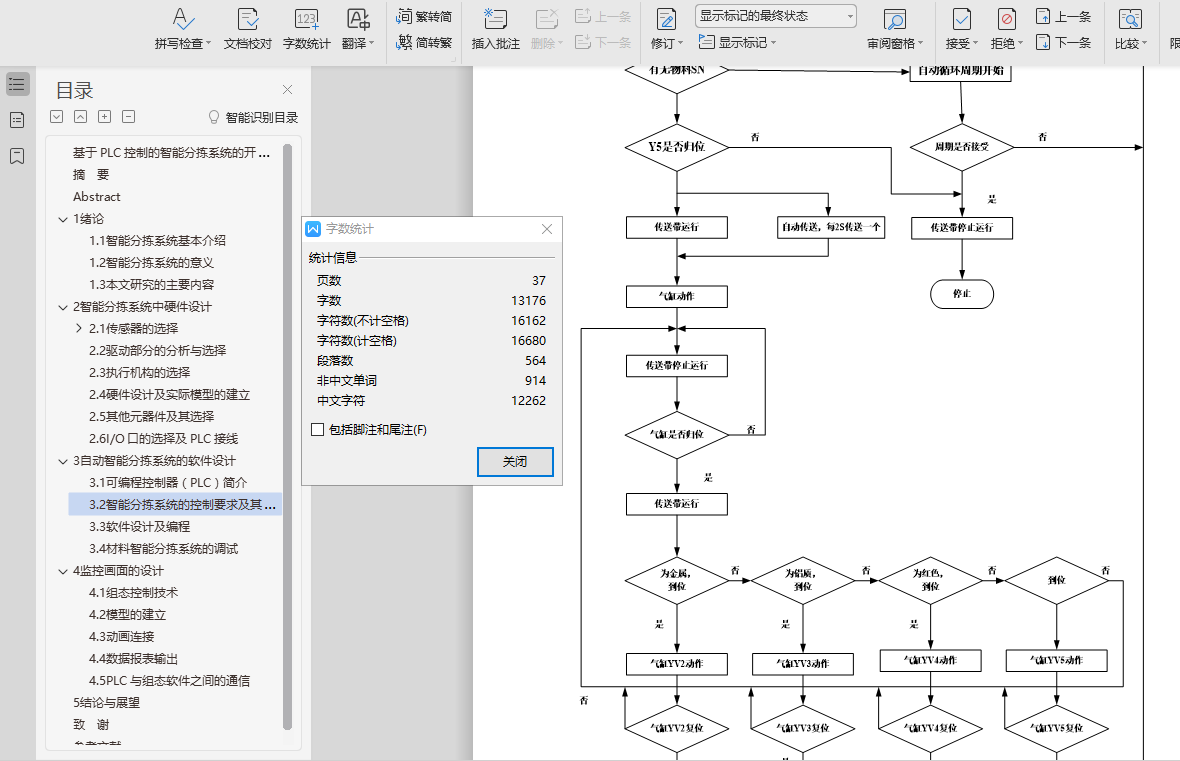基于PLC控制的智能分拣系统的开发与设计
摘 要
随着科学技术的飞速发展,智能分拣系统开始运用各种各样的自动化设备,计算机控制技术和信息技术成为信息传递和处理的重要手段。虽然在大部分智能分拣系统中有些作业环节到目前为止需要有人工的参与,但作业强度越来越小。完全由机械完成分拣作业的自动智能分拣系统也与之而生。机械化、自动化、智能化成为现代智能分拣系统的主要特点与发展趋势。现代化的智能分拣系统逐渐成为物流机械化系统、信息系统以及管理组织系统的有机组合。计算机控制技术、信息技术以及物流自动化机械成为现代智能分拣系统的重要组成部分。本文在对熟悉了自动及智能分拣系统的原理的基础上,根据一定的分拣要求,采用了整体化的设计思想,充分考虑了软、硬件各自的特点并进行互补优化,设计了一个物料传送及智能分拣系统。
关键词:智能分拣系统;PLC控制;MCGS组态软件
Abstract
With the rapid development of science and technology, intelligent sorting system began to use a variety of automatic equipment, computer control technology and information technology has become an important means of information transmission and processing.Although manual participation is required in most intelligent sorting systems, the work intensity is becoming smaller and smaller.The automatic intelligent sorting system, which is complete by machinery, is also born with it.Mechanization, automation and intelligence have become the main characteristics and development trend of modern intelligent sorting system.Modern intelligent sorting system is becoming an organic combination of logistics mechanization system, information system and management organization system .Computer control technology, information technology and logistics automation machine become an important part of modern intelligent sorting system.On the basis of being familiar with the principle of automatic and intelligent sorting system and according to certain sorting requirements, this paper adopts the integrated design idea, fully considers the respective characteristics of software and hardware, and carries out complementary optimization.A material transfer and intelligent sorting system is designed.
Key words: intelligent sorting system PLC control MCGS configuration software
目 录
摘 要 I
Abstract: II
1 绪论 1
1.1 智能分拣系统基本介绍 1
1.2 智能分拣系统的意义 2
1.3 本文研究的主要内容 2
2 智能分拣系统中硬件设计 4
2.1 PLC的选型 4
2.1.1 PLC的分类 4
2.1.2 PLC种类及型号选择 5
2.2 传感器的选择 5
2.2.1传感器的简介 5
2.2.2传感器的选择 7
2.3 驱动部分的分析与选择 8
2.4 执行机构的选择 9
2.5 硬件设计及实际模型的建立 10
2.6 其他元器件及其选择 11
2.7 I/O口的选择及PLC接线 13
3 自动智能分拣系统的软件设计 16
3.1 可编程控制器(PLC)简介 16
3.2 智能分拣系统的控制要求及其流程图 19
3.3 软件设计及编程 21
3.4 材料智能分拣系统的调试 24
4 监控画面的设计 31
4.1 组态控制技术 26
4.2 模型的建立 27
4.3 动画连接 29
4.4 数据报表输出 32
4.5 PLC与组态软件之间的通信 33
5 结论与展望 36
致 谢 38
参考文献 37




